Luke Macgregor
Email address
moc.liamg@camdnahthgirWeb Portfolio
righthandmac.comBiography
Designer, Researcher, and Advocate for Neurodivergent Creativity
I’m a multidisciplinary designer with a focus on inclusive editorial and publication design. My practice combines research, personal insight, and strong visual storytelling to explore complex topics—often through the lens of neurodiversity. With a particular interest in ADHD and how it shapes both creative output and process, I aim to design experiences that are as accessible as they are engaging.
My strengths lie in building narrative-driven layouts, using typography and structure to guide attention, reduce cognitive overload, and enhance readability. I’m drawn to overlooked details—whether in the rhythm of suburban environments or the textures of everyday life—and I enjoy transforming these into quiet, reflective design moments.
Through a balance of concept and craft, I strive to create work that’s thoughtful, emotionally resonant, and socially aware—design that doesn’t just look good but connects meaningfully with people.
Portfolio
‘a town’
A Town
A quiet study of place, memory, and overlooked beauty.
A Town is a personal photographic exploration of Ashford, my once home town. Set against the backdrop of a changing urban landscape, the project captures the transitional, often invisible moments that define everyday life—textures, fragments, and architectural details that might seem unremarkable at first glance, but reveal quiet poetry when carefully framed.
The work is both observational and reflective, focusing on naturally formed compositions within urban environments—faded signage, empty shopfronts, overlooked corners. Through these details, the book documents a town in flux: once vibrant, now quieter, shaped by economic shifts and the rise of destination retail.
More than just a visual study, A Town carries emotional weight. It’s rooted in nostalgia, humour, and a deep sense of place shared by those who grew up there. For outsiders, it may appear as just another town; but for those who know it, the images carry familiarity—capturing the feeling of home, however complex that may be.
By paying close attention to what’s fading or forgotten, the project invites viewers to reconsider the value of routine spaces, and to find quiet meaning in the everyday.
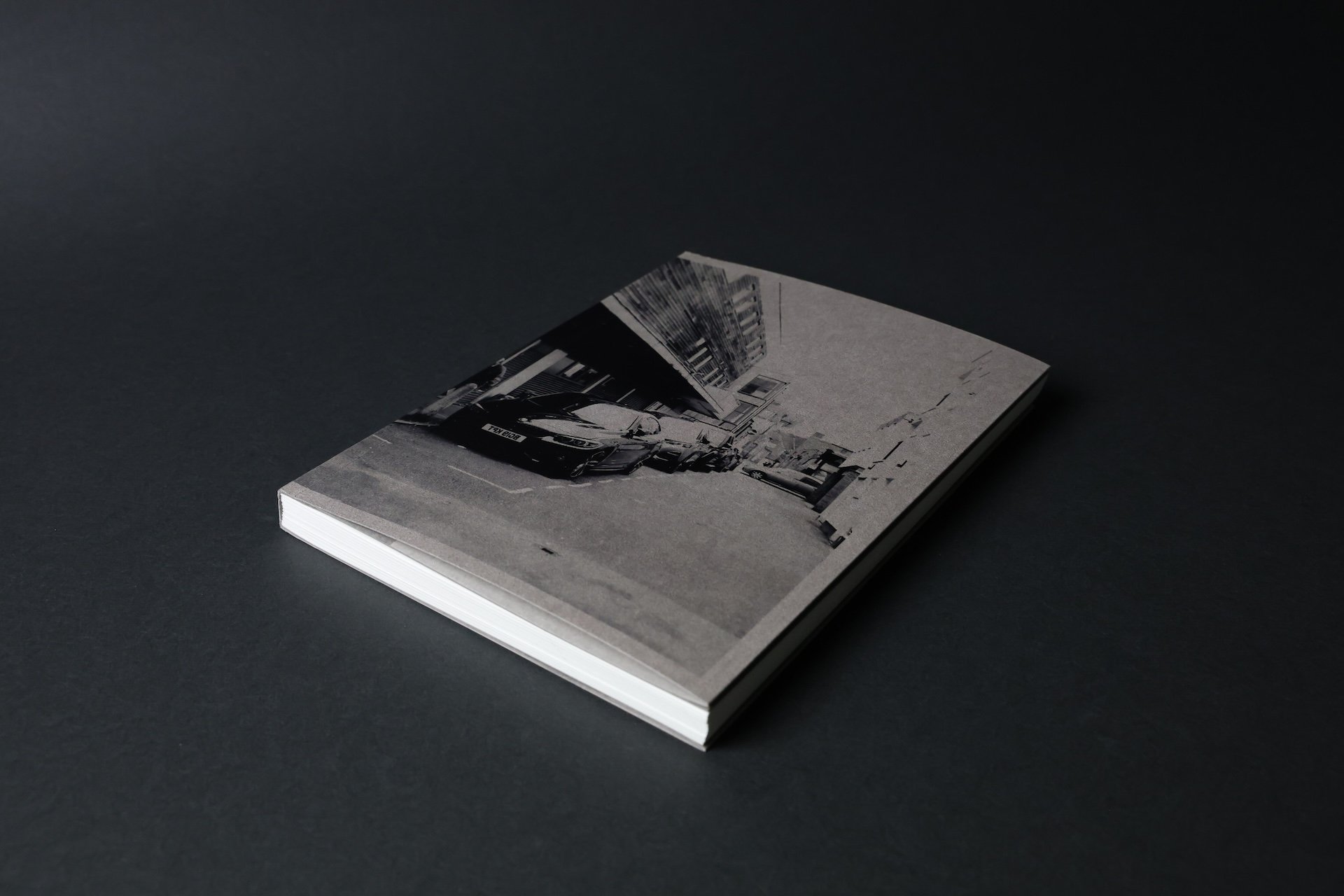
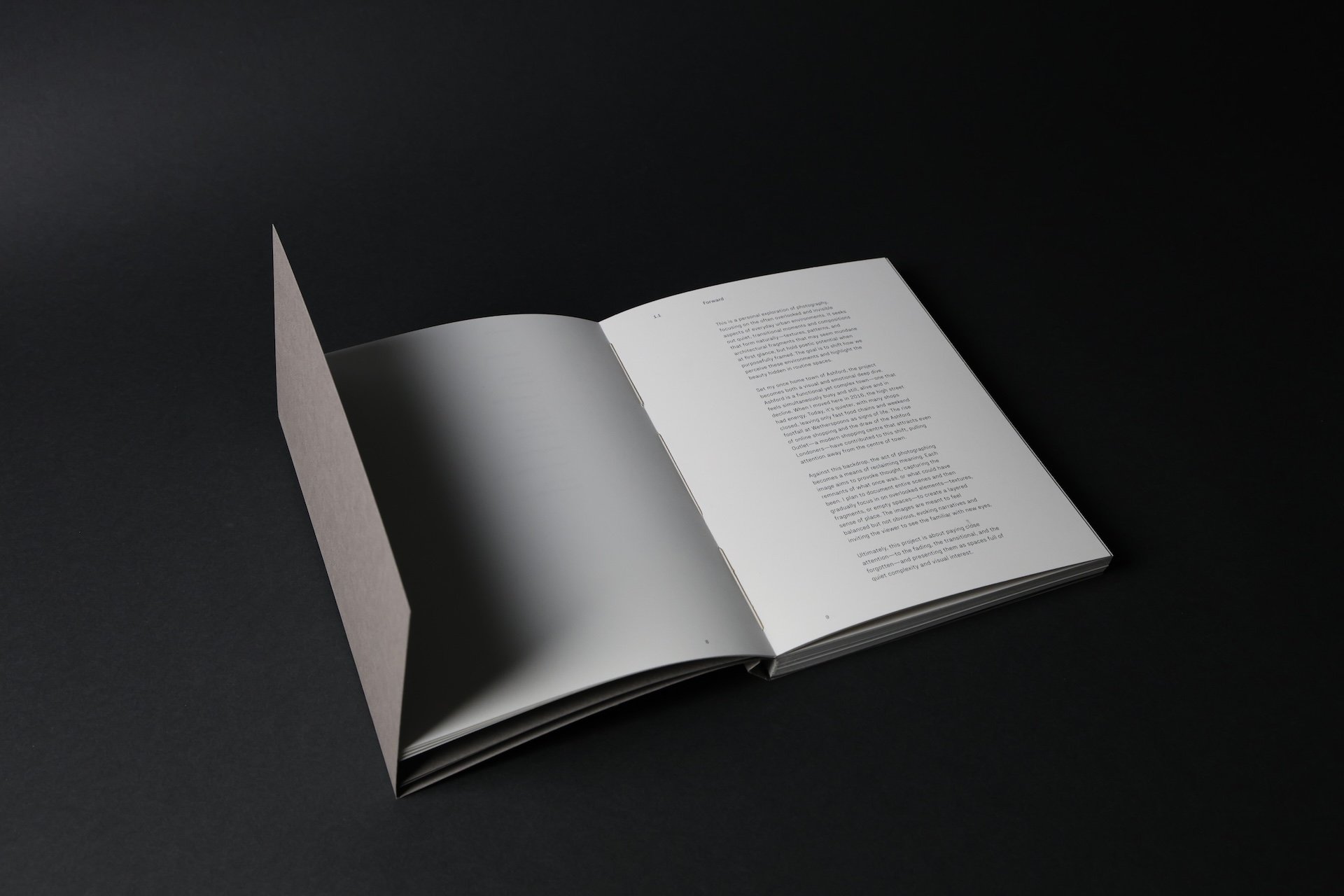
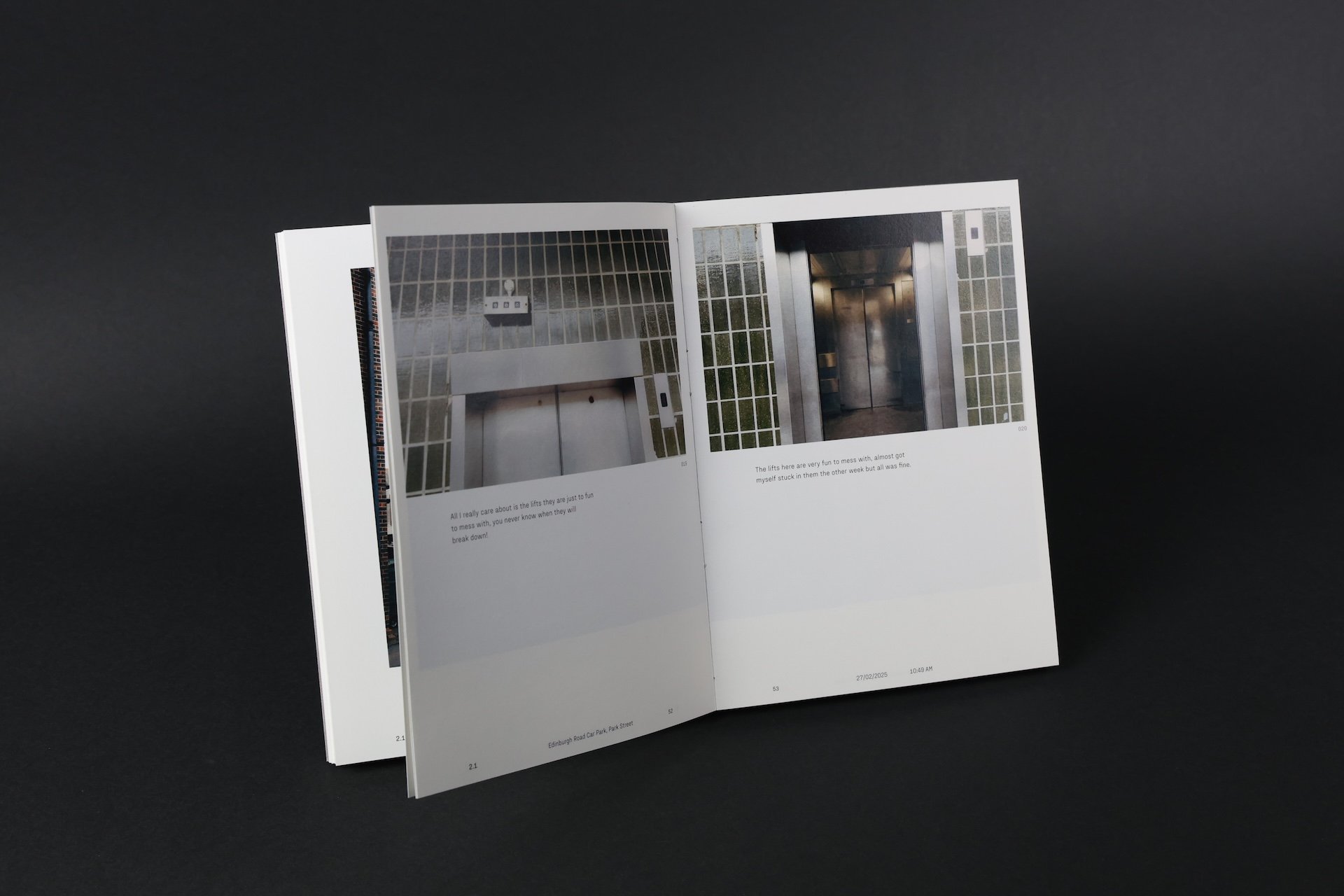

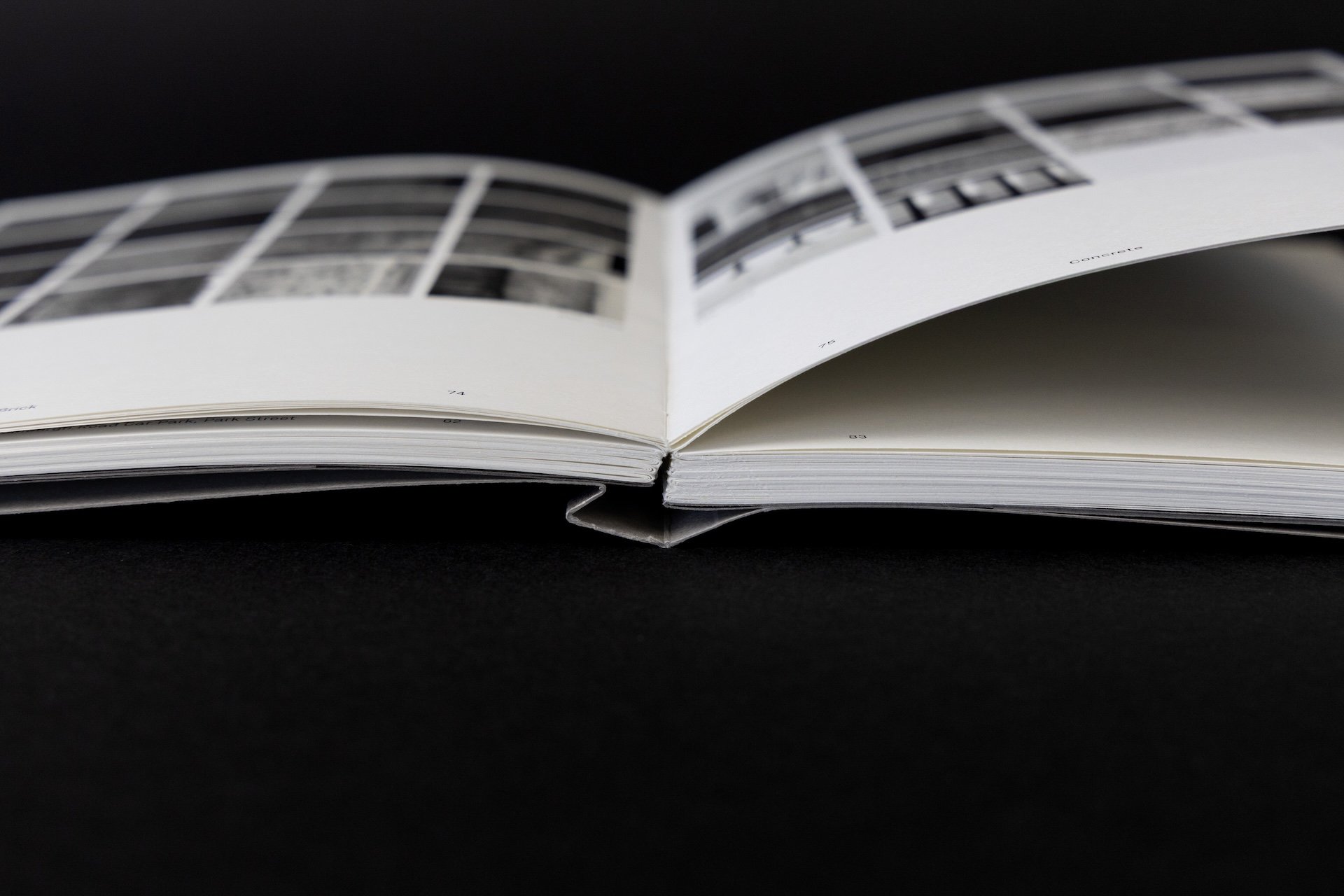
Divergent By Design
This project, which explores the lived experiences of neurodivergent individuals with ADHD and dyslexia through an accessible and tactile informational card pack, arose from recognizing the limitations of traditional educational resources. Textbooks and widely referenced online sources—like NHS and government websites—often offer narrow, clinical perspectives that lack the authenticity and human nuance necessary to fully represent neurodivergent realities.
Building on earlier work redesigning editorial layouts for ADHD, this project shifts focus toward real voices and stories collected from over 40 respondents. By basing the content on firsthand experiences rather than standard textbook definitions, the cards capture the complexity, diversity, and individuality of neurodivergence. This approach promotes empathy, challenges stereotypes, and provides relatable, practical insights frequently missing from official information.
Designed to be visually engaging and legible for both neurodivergent and neurotypical audiences, the modular card format supports interactive, digestible learning. By centering neurodivergent perspectives, the project fosters inclusive communication tools that better represent invisible disabilities and encourage broader understanding within design and beyond.
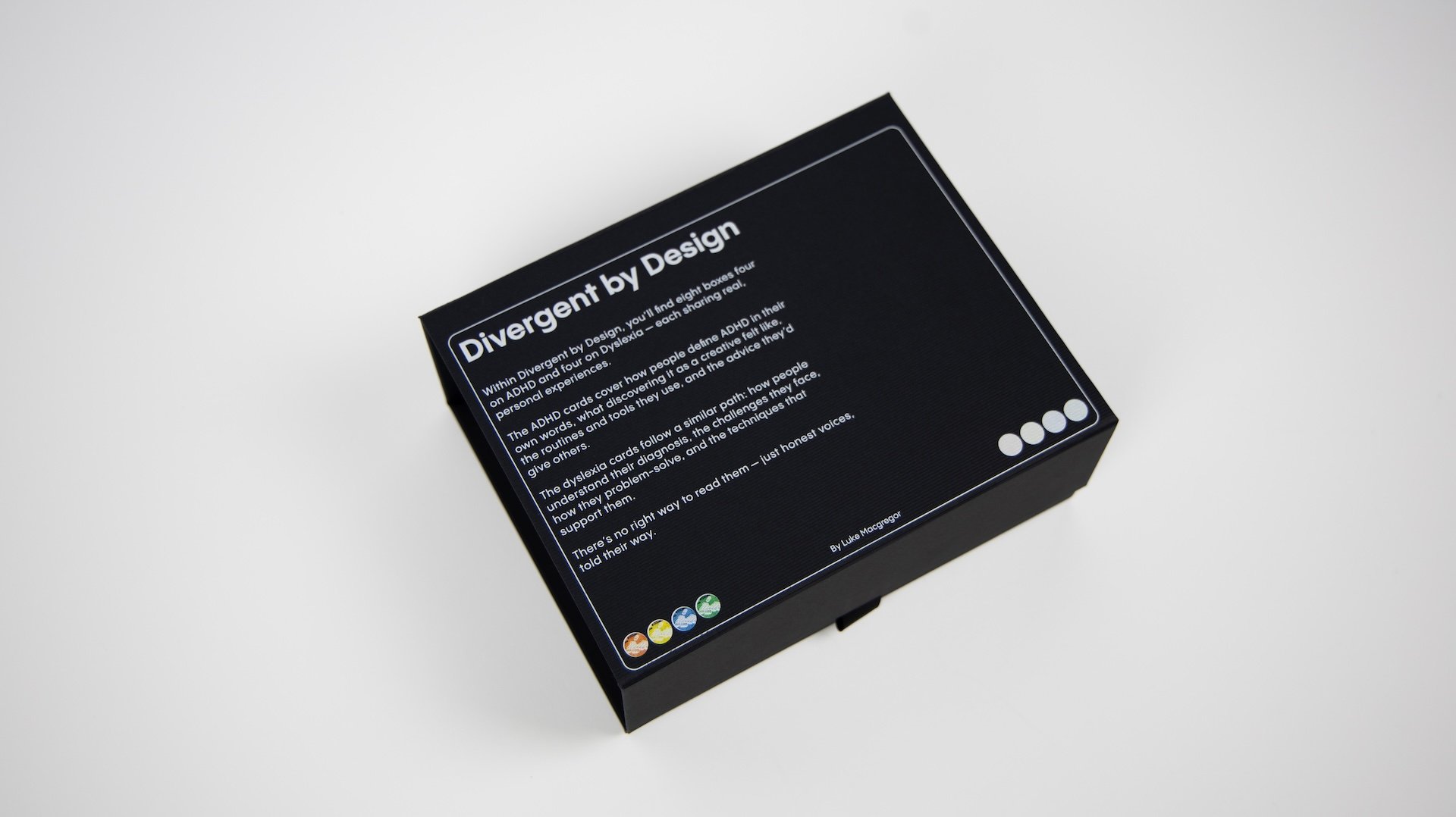
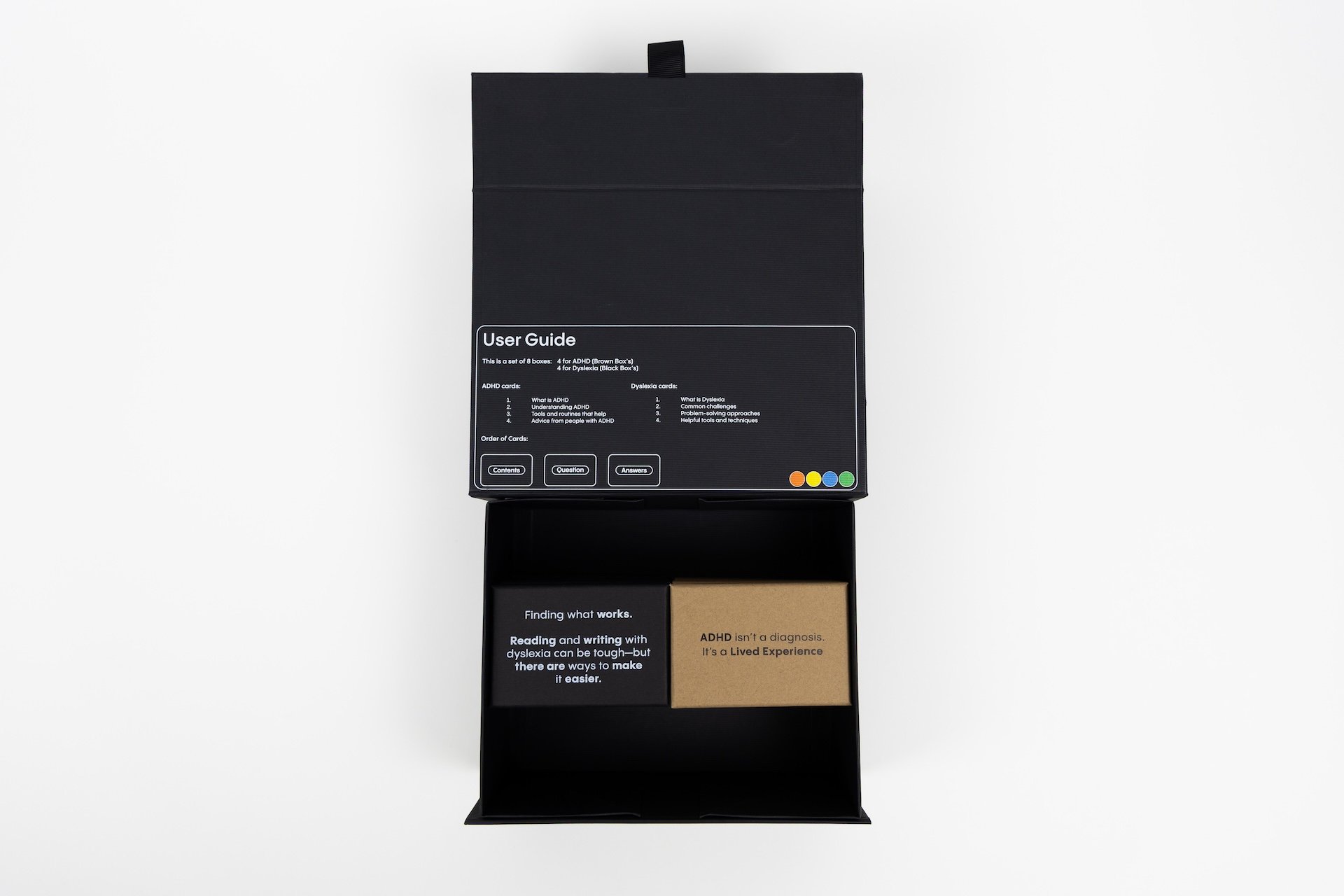
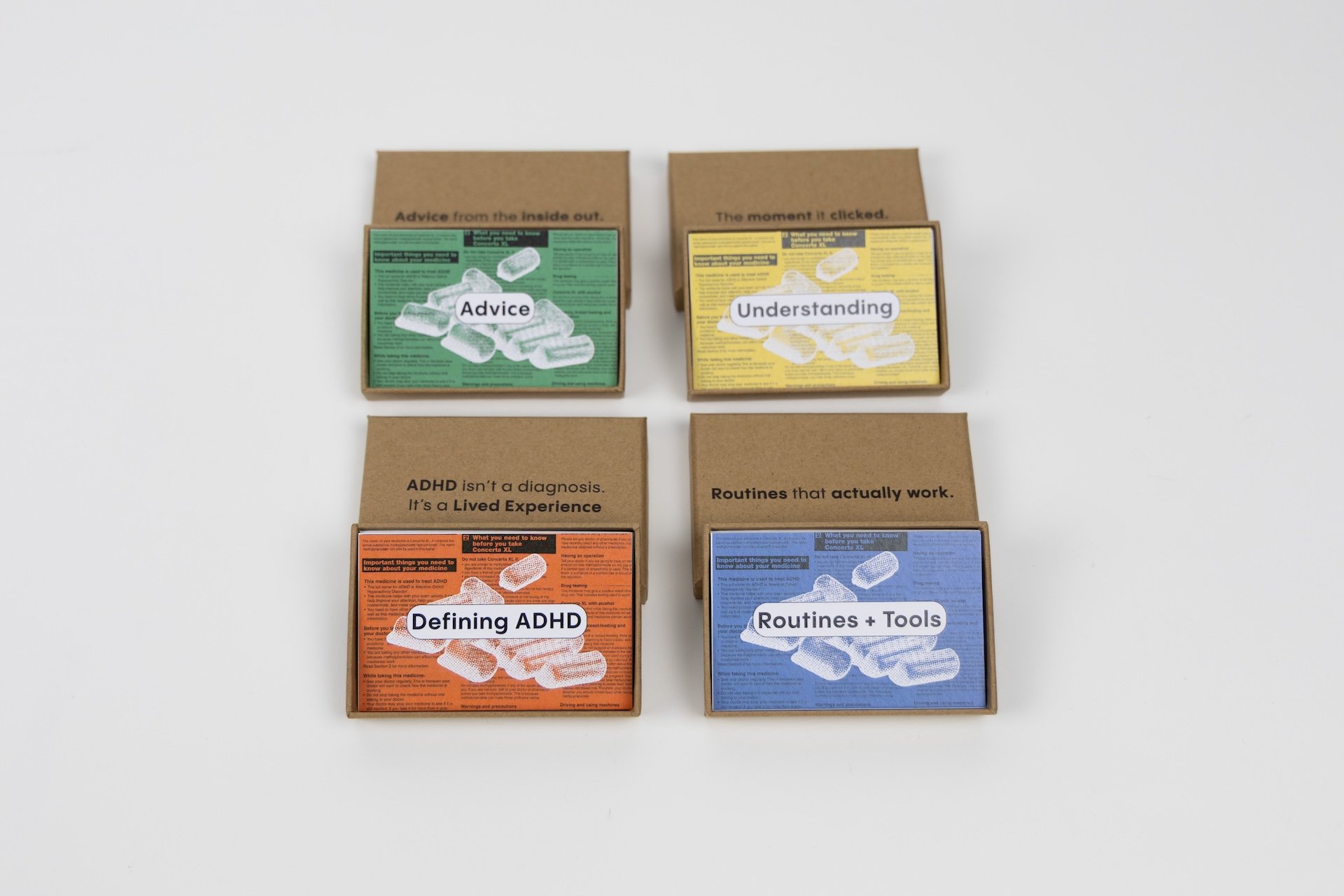
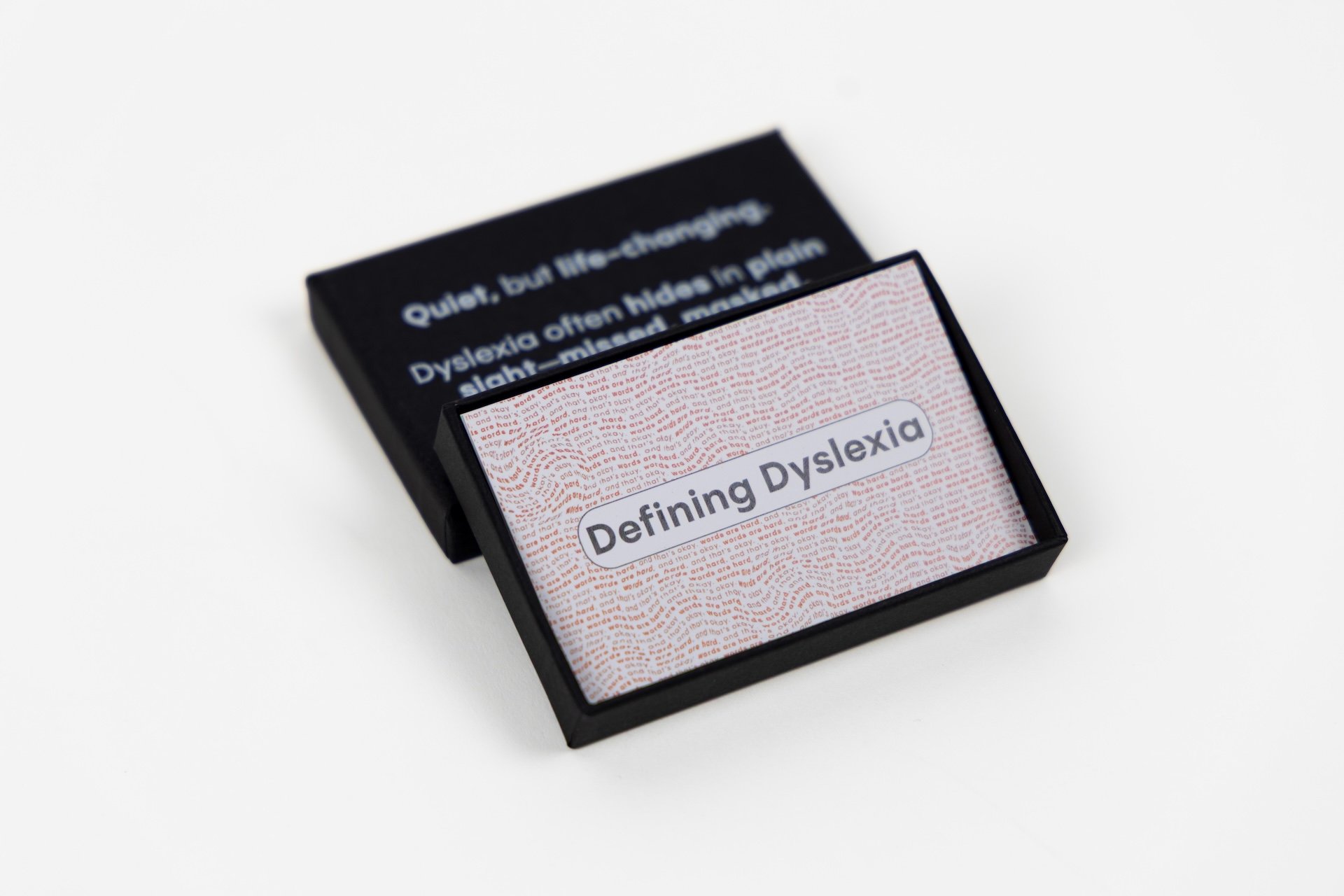
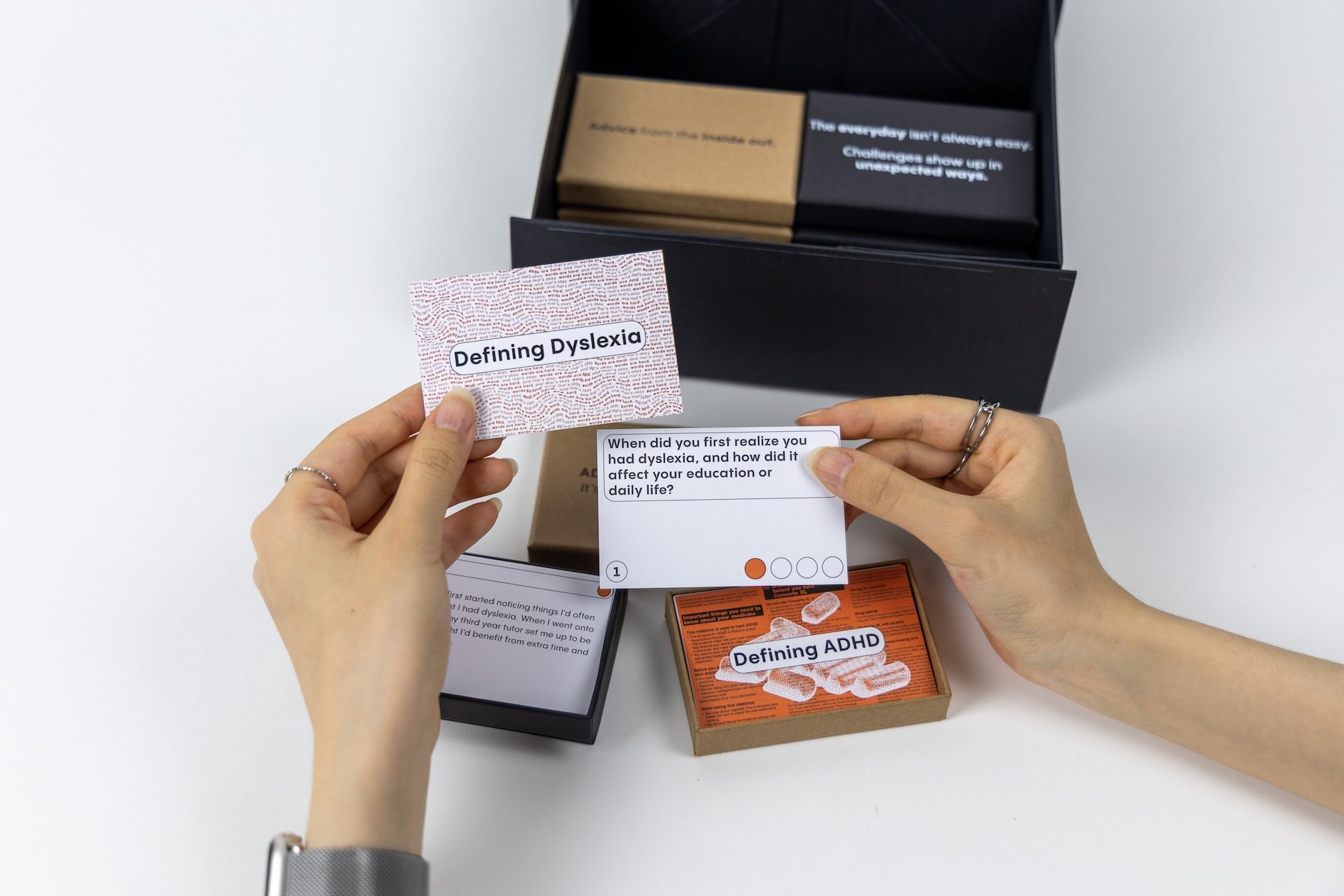
Dissonance
Visualising ADHD is not straightforward. It affects each of us differently, meaning that there can never truly be a definite visual definition.
Using a combination of still photography and moving image, due to the non-static nature of ADHD, some representations cannot be accurately represented from one moment in time. For each symptom that affects me the most, I will adapt photographic techniques in order to visually demonstrate the inner workings of my brain.
All choices of sound, colour, texture, mood, and typography will be informed by ADHD itself and how I experience it. For example, sound and texture will differentiate between overstimulation rather than a peaceful mindset. Still images will be used to capture an emotive facial expression or a scene that reflects how my mind feels at that time, using voiceovers by myself to keep that personal raw nature.
My idea is to place the viewer within my mind, in an unbiased, raw, and almost empathetic way.